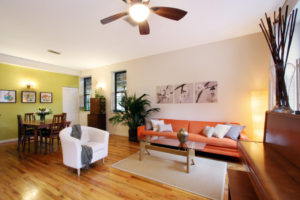 A few months ago, My Divine Concierge published a blog post asking the question, “is there psychology behind organization?” If you read that post, you know the answer. This post is similar inasmuch as there is a certain amount of psychology involved in staging a home for sale. The professional home stager wants to present a home that will push the right psychological buttons in the minds of buyers, thus increasing the chances of a strong sale.
A few months ago, My Divine Concierge published a blog post asking the question, “is there psychology behind organization?” If you read that post, you know the answer. This post is similar inasmuch as there is a certain amount of psychology involved in staging a home for sale. The professional home stager wants to present a home that will push the right psychological buttons in the minds of buyers, thus increasing the chances of a strong sale.
One of the services we offer is home staging. In light of that, we thought it might be fun to share with you some of the secrets professional home stagers use quite frequently. It still takes some amount of skill to employ these secrets, but at least you can know how stagers view their work. We offer four secrets in this post; four more will follow in our next post.
1. They Find the Right Spatial Balance
An important goal in staging most homes is to make rooms look bigger than they actually are. The idea is to give buyers the impression they have ample space for their needs. Having said that, what if a stager is preparing a smaller home for the purposes of appealing to a group of buyers that do not want a lot of space – ergo, tiny home enthusiasts?
The secret is to find the right balance. If a room has too much furniture, it will look small. Believe it or not, a completely empty room also looks small. Successful stagers know how to strike that fine balance regardless of the room being staged.
2. They Arrange and Rearrange Furniture
Successful stagers will walk into a room and immediately assess the layout of the room along with its furniture. Then they will arrange the furniture to try to make room as large as possible. Some stagers even rearrange multiple times to get it right. The goal is to keep larger objects in the furthest corner of the room and to avoid cluttering or crowding entry points.
3. They Create Balance with Numbers
Believe it or not, there is a commonly known ‘rule’ among successful stagers that it’s okay to balance a room as long as odd numbers are used. For example, three chairs on either side of the dining room table. Using odd numbers creates just a hint of something that forces the viewer’s eyes to look around the room for something that will balance off what is perceived to be out of balance. Using odd numbers encourages visitors to really study a room – even if they don’t know they are doing so.
4. They Generate Flow with Color
Lastly, successful home stagers create flow from one room to the next using color. This works best when walls are already neutral, but neutrality is not necessary in all cases. A good designer can use a splash of color here and there to tie every room together in a way that is subtle and inviting without being intrusive to the eyes. As for the actual volume of color, that varies from one stager to the next. A good rule is 60% in the main color, 30% as a secondary color, and another 10% for accents.
Now you have a good idea of some of the secrets successful home stagers employ. Be sure to check back for the second post in this series. Will have four more secrets to learn. In the meantime, My Divine Concierge is available to help you stage your home for sale. Bear in mind that a well-staged home is likely to sell more quickly and command a higher price.
